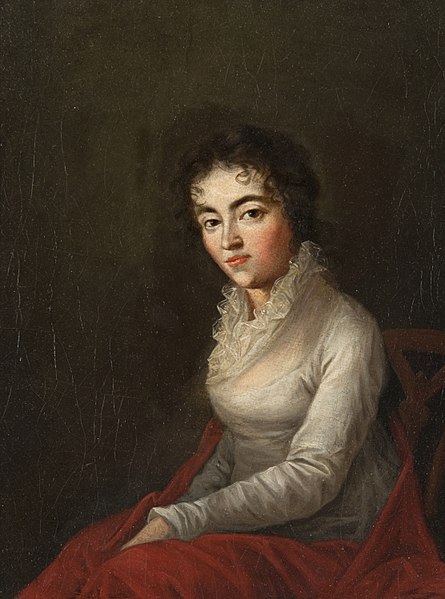Yesterday marked 180 years to the day since the death of Constanze Mozart, neé Weber, later Nissen (5 January 1762 – 6 March 1842). Although eclipsed by her rather more famous first husband, Wolfgang Amadeus, Constanze herself was also an accomplished musician. In fact, one of the ways in which Constanze supported herself and their children financially after Mozart’s death was by organising concerts of his music, in which she also sang.

Sebastiansfriedhof, Salzburg – Andreas Praefcke, CC BY 3.0. via Wikimedia Commons.
She was born into the musical Weber family – the composer Carl Maria von Weber was a cousin – as the third of four sisters, all of whom sang. Their father, Fridolin, was also a musician, working as a bass singer, prompter and music copyist.
She first crossed paths with Mozart in Mannheim in 1777, where she grew up and he was on a job-hunting trip. During that time, however, it was her older sister Aloysia with whom the young composer fancied himself in love. This (unrequited) love was accompanied by a great respect for Aloysia’s capabilities as a singer, and resulted in a number of astoundingly ambitious concert arias written by Mozart especially for her, as well as the role of Madame Herz in Der Schauspieldirektor. The most famous of these arias is probably ‘Popoli di Tessalia’, which contains not one but two G6s – which was at the time the highest note ever demanded of a singer (I believe Thomas Ades has gone one further with an A6 in The Tempest!).
Performances and/or recordings of these arias are few and far between, for obvious reasons… I’ve listened to a few: one by the late Edita Gruberova, who recorded a number of arias as part of the Complete Mozart Edition CD series, and another by Natalie Dessay, who has also tackled them all – listen to Dessay’s recording of Mozart’s concert arias on Naxos Music Library (available for current staff and students), or you can find a CD on the shelf in the library at SONGS: DES.
It was Aloysia’s singing career that moved the Weber family to Vienna in 1779, where in 1781, Wolfgang became the family’s lodger. Aloysia had married actor and painter Joseph Lange by this time, and it was Constanze who became the centre of Mozart’s affections.

And it was for Constanze that Mozart composed the beautiful soprano solo ‘Et incarnatus est’ in his Great Mass in C minor (K427/417a), a work which sadly remained unfinished (or, at least, has survived incomplete). It was composed during 1782-83 and was premiered in late 1783 in Salzburg, with Constanze singing this solo.
The technical mastery as well as the emotional sensitivity required for this solo suggests that Mozart held his new wife’s musical abilities in very high esteem! Of the recordings I’ve listened to, my favourite so far is Syliva McNair’s performance of Et incarnatus est (available on Naxos Music Library for current TL staff and students).
The eldest Weber sister, Josepha, was no less impressive – for her, Mozart composed the role of the Queen of the Night in Die Zauberflote. I’ve often thought that if I had a TARDIS, I would definitely go back in time to hear various musicians performing in their heyday – the Weber sisters are certainly on my list!
Finally, if you fancy hearing some live opera in an unusual setting, head for St Pancras station tomorrow (Tuesday 8th March) – to celebrate International Women’s Day, the station will become an opera stage for a series of brand new mini-operas written by female composers and librettists, all inspired by real-life anecdotes about travelling by train.
